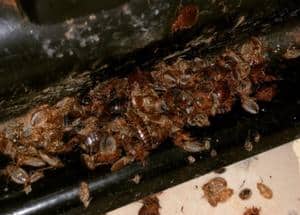Bed bugs are nasty tiny pests. All they need is a comfortable temperature, food (human blood), and hiding places to breed. Our houses, especially beds and couches, are heavenly places for them.
These insects can appear even in perfectly clean rooms. It’s not easy to deal with them since they are extremely tenacious and multiply rapidly.
In this article, I will go into detail on how to get rid of bedbugs in a couch, which methods are most effective, and how to prevent infestation in the future.
How to Get Bed Bugs Out of Couch: Easy Extermination Guide
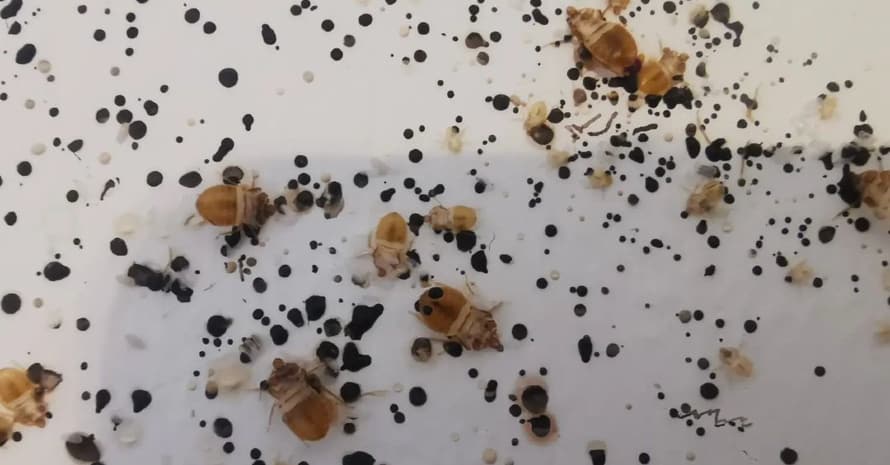
To get rid of couch bugs, you should take a multi-step approach. First, you need to physically remove bed bugs from a couch by vacuuming, washing, and steaming or freezing. After that, use chemical products against bed bugs in furniture like sprays and dust. Use interceptors to prevent the problem from recurring.
How do I know if I have bed bugs in the couch?
These insects are quite small (up to 0.3 inches), so you may not notice one crawling bug. Pests can appear in your home regardless of its sanitary condition.
You can bring their eggs or larvae on shoes or with groceries from a store, or they can crawl in from your neighbors. They multiply so quickly that the infestation will make itself felt after a few days.
Bites. Red spots on the skin from insect bites are the first sign that you have a bed bug nest in a couch. One pest can leave from three to five wounds. Bites can cause a severe allergic reaction: they become inflamed and enlarged; sometimes, the temperature may rise due to infection.
Smell. People who are especially sensitive to extraneous smells can feel the appearance of bed bugs by a specific odor. They say that a room starts to smell like cheap cognac or nutmeg. Some argue that the sour smell is reminiscent of fermented berries.
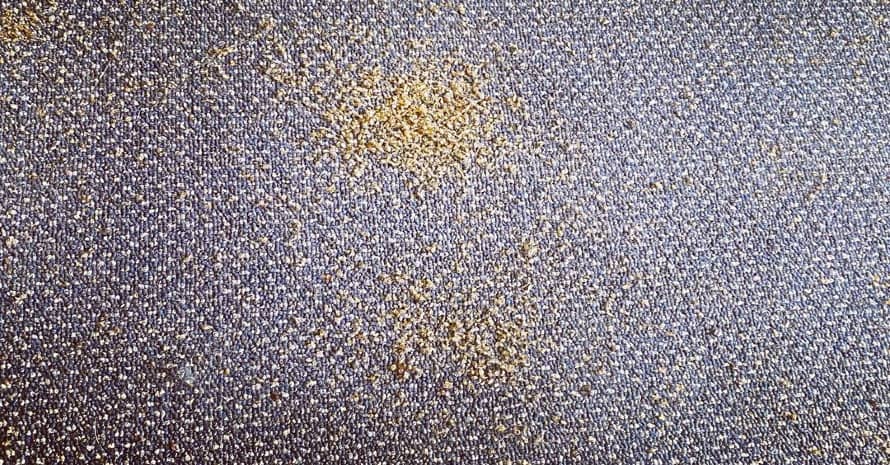
Visual infestation signs. Bed bugs do not tend to organize nests as ants do. However, they prefer to stick together in secluded places. Even if you can’t see the insects themselves, you may find accumulations of eggs, shells, and excrement (small black dots) under a bed frame or cushions. You may also notice small blood stains from bites on the bedding.
These pests are active at night. So if all the described signs of bed bugs in a couch don’t convince you of an infestation, spread a white sheet over your bed or couch in the evening. At night, go into the room and turn on the light abruptly; insects simply won’t have time to scatter, and you will see them.
How to treat bed bugs in a sofa
Now that you have verified that there is a problem, you should move on to fixing it. When dealing with hardy pests like bed bugs, I always recommend taking a holistic approach.
It is essential to use both mechanical and chemical methods to remove insects. Follow the steps below to get rid of a headache.
Washing and vacuuming
Cleaning should begin by removing bedspreads, pillowcases, linens, and other covers, washing them at the highest temperature allowed, and processing them in a dryer. Heats of 115°F and above are considered lethal to these pests, both for the adults and eggs (usually better protected).
Those parts that cannot be washed in a machine should be thoroughly vacuumed. Try to work every corner of a couch and bed, including the frame, all mattress seams, decorative folds, etc.
Use different nozzles to penetrate even hard-to-reach places. If possible, use a HEPA filter, which helps to remove even the smallest particles. When emptying your vacuum cleaner, be extremely careful not to scatter the collected insects accidentally.
Put them in an airtight bag and take them as far away from home as possible. Do not forget to process the device itself so that pests do not get stuck in the internal mechanisms.
Steaming
Since bed bugs do not survive extreme temperature changes, steaming furniture is one of the most effective methods. Of course, the best option is to use a steam generator.
If you do not have one, you can use a heat gun, an iron, and even a hairdryer. When using the last two tools, remember they are not intended for long-term use; you have to take breaks.
Be careful when steaming, as some fabrics, especially those containing elastane and similar materials, may lose their form.
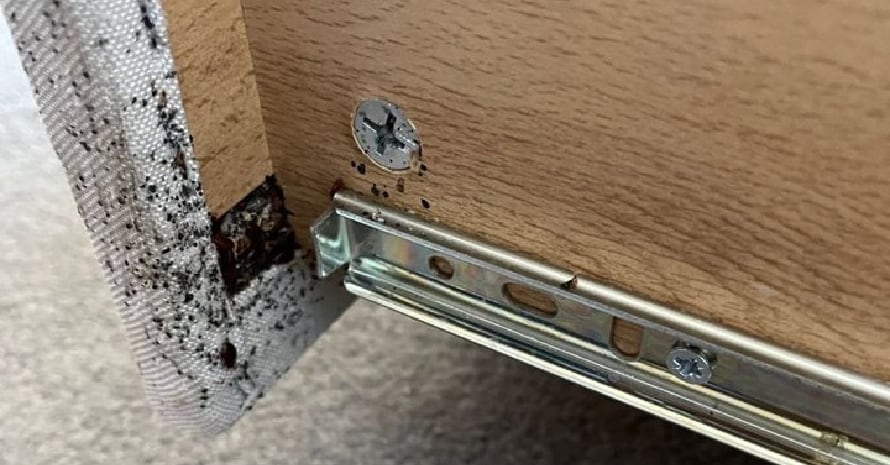
If you live in a warm climate and do disinsection in the summer, you can pack cushions and other removable furniture parts in airtight plastic bags and expose them outside to the sun. After some time, the temperature inside will become high enough to kill the remaining insects.
Freezing
By strong temperature changes, which are deadly for pests, I also mean a decrease in temperature. Making freezing effective at home can be tricky.
But if you have the opportunity to use, for example, industrial refrigerators, or you live in a frosty climate, you can freeze infested items. Keep them in this condition for at least three days at a temperature not exceeding 5°F. The stronger the frost, the faster you will destroy pests.
Chemicals
In addition to the methods described, you should also use chemicals. In stores, they are presented in the form of sprays, powders, traps, and gels. The first two showed their greatest efficiency due to their high permeability even in narrow gaps.
When choosing an effective bed bug spray for couches, pay attention to its composition. You should look for products containing Fenthion, Imiprothrin, Cyphenothrin, Cypermethrin, Malathion, or Piperonyl butoxide (in combination with Pyrethrins).
Although all of the listed ingredients have low human toxicity, I still recommend using a specific PPE when working with them. This way you will avoid getting products into the body and possible allergic reactions. It is better to remove pets from the house during the treatment period.
If you’re looking for a safer way to kill insects, check out diatomaceous earth (DE). It is absolutely non-toxic since it has not a chemical but a mechanical effect on insects. Finely dispersed powder scratches their chitinous shells and absorbs all liquids.
Bed bug interceptors
The final step to getting rid of bed bugs is to set up traps. The most effective, in my opinion, is the so-called bed bug interceptors. They are small double-walled plastic “cups” into which the legs of a bed or sofa are set.
Insects freely crawl inside but cannot get out. As a result, you can be sure that pests will not migrate to other furniture.
How to prevent further infestations
In the fight against insects, it is important not only to destroy them correctly but also to prevent their reappearance. Take the following actions:
- carefully treat ventilation holes with insecticides and close them with a fine mesh;
- hermetically seal cracks in walls, near doors, and window frames;
- use natural repellents: lavender, kerosene, turpentine, ammonia, geranium, wormwood, vinegar, and so on;
- do not remove interceptors from the bed legs.
If you find bed bug eggs on a couch, notify your neighbors. There is a high probability that complex processing of adjacent premises will be required.
Also, remember that bed bugs, like many other pests, become resistant to chemicals over time. Contact professionals if you fail to get rid of them in three or four tries.
FAQ on Getting Rid of Bed Bugs in Furniture
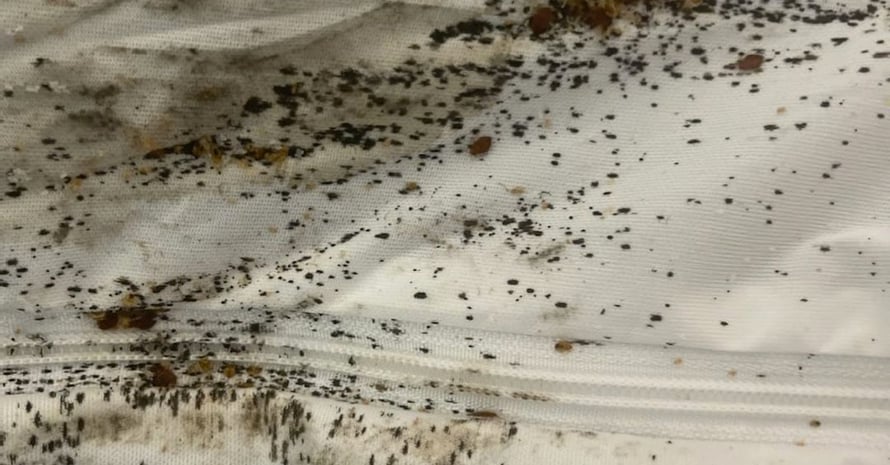
See my answers to common questions for more information on dealing with these blood-sucking pests.
Should I throw away my couch if it has bed bugs?
Unfortunately, furniture does have to be thrown out if you or professionals can’t thoroughly treat it with insecticides. If the situation is neglected, mattresses and couches are subject to recycling. Don’t throw them in the trash, as you’ll spread the infestation.
How long does it take bed bugs to infest a couch?
It depends on the specific insect type you have. On average, one female can lay up to 10 eggs per day. An insect can complete a full cycle in two months. So in a couple of months, you will have a whole colony of pests with different stages of development in your bed.
Can new furniture have bed bugs?
Unfortunately, it’s possible if manufacturers or suppliers do not comply with storage conditions. Insects could get inside the furniture even during the delivery process if a truck were previously infested with them.
Use Integrated Approach to Get Rid Of Couch Bugs Forever
The methods I have described work effectively and destroy pests in combination with each other. Timely identification of the problem will help you get rid of bed bugs on your own.
In addition to the direct treatment of the couch where you found insects, you should also disinfect other furniture and the entire room. Otherwise, your struggle will be very long, and you will have to turn to specialists.
Have you ever experienced a bed bug infestation in a couch, sofa, or mattress? How did you deal with this problem? What methods have been the most effective for you?
Also read:
- Harris Bed Bug Killer Review
- Hot Shot Bed Bug Fogger Review
- What Scent Keeps Bed Bugs Away
- Dead Bed Bugs
- Do Bed Bugs Lay Eggs in Your Skin
- How to Get Rid of Bedbugs in a Couch
- What Scent Keeps Bed Bugs Away
- Can Bed Bugs Live on Plastic
References
- Bed bug (Wikipedia)
https://en.wikipedia.org/wiki/Bed_bug#Insect - Personal Protective Equipment for Pesticide Applicators (Montana State University)
https://www.pesticides.montana.edu/reference/ppe.html - Malathion (Oregon State University and the U.S. Environmental Protection Agency)
npic.orst.edu/factsheets/malagen.html - What is a HEPA filter? (United States Environmental Protection Agency)
https://www.epa.gov/indoor-air-quality-iaq/what-hepa-filter - Bed Bugs: A Public Health Issue (United States Environmental Protection Agency)
https://swap.stanford.edu/20151016075136/https://www2.epa.gov/bedbugs/bed-bugs-public-health-issue

